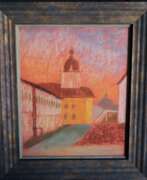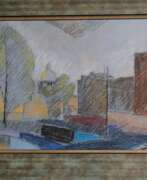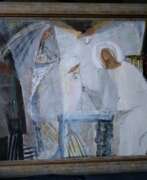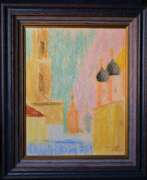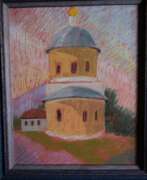Leningrad School

Leningrad School
The Leningrad School of Painting, a prominent art movement spanning from the 1930s to the 1990s, was a key contributor to the rich tapestry of Soviet art. This movement coalesced around the reformed Academy of Arts in Leningrad, now St. Petersburg, and was distinguished by its members' allegiance to the Leningrad Union of Soviet Artists. The school is celebrated for its adherence to realist traditions in the face of political and social change, and for fostering a unique artistic vision that often incorporated elements of Soviet Realism, particularly during Stalin's era.
These artists produced a diverse body of work that included landscapes, still lifes, and socially significant paintings, with a notable shift in the post-war era towards a more painterly style and a focus on contemporary Soviet life. Despite the hardships of the Siege of Leningrad during World War II, the school continued to thrive, with artists like Andrei Yakovlev and Yevsei Moiseyenko contributing notable works.
Key figures in the Leningrad School include Isaak Brodsky, who was instrumental in its founding, and artists like Yuri Neprintsev and Andrei Yakovlev, whose works are preserved in leading Russian museums. The school's output reflects a commitment to traditional easel painting techniques, alongside the Soviet ideological narrative, but also allows for individual expression, seen in the works of Anatoli Nenartovich and Arsenii Semionov.
The Leningrad School's influence waned with the collapse of the Soviet Union in 1991, marking an end to an era but leaving a lasting impact on Russian and world art history. Today, its works are highly regarded and collected, found in major art museums and private collections worldwide, including the Russian Museum, the Tretyakov Gallery, MOMA, and the Tate Gallery.
For collectors, auctioneers, and experts in art and antiques, the Leningrad School represents a significant period in art history with its blend of traditional techniques and the exploration of contemporary themes. Those interested in learning more about this influential school, its artists, and its works can subscribe to updates from galleries and museums with collections of Soviet art. This will ensure you receive the latest news on exhibitions, sales, and auctions related to this pivotal movement in art history.
| Country: | USSR (1922-1991) |
|---|---|
| Start of the period: | 1930 |
| End of the period: | 1990 |

